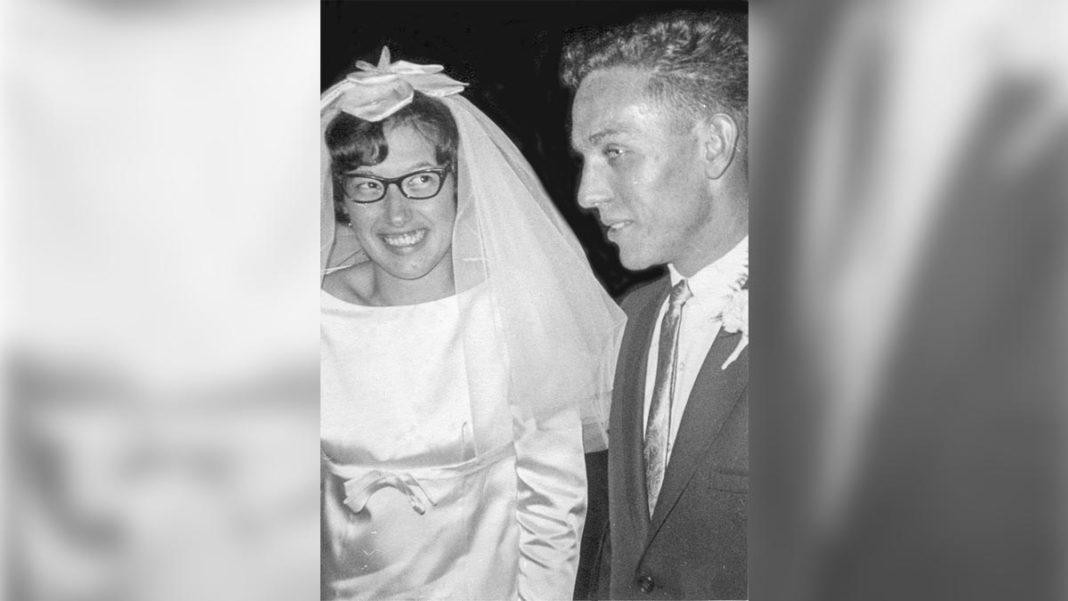by Petra Wall
The Deyell home sits well back from Highway 6 and presents a lovely water view to the back. “In the winter, after a rain followed by freezing temperatures, we can skate on the surface. It is like gliding on glass. Right now, the Sandhill cranes are arriving to nest and rear their young, whose antics provide entertainment as they prance about.” Simultaneously, we hear their distinctive calls as they fly overhead, filling the room with that familiar sound. “We have our share of wildlife here and on our nearby hunting property.” During the day, Art enjoys a little birdwatching while sitting in his favourite chair by the back window, near the feeders. Occasionally deer stroll by too.
For Jane Simpson Deyell, being well-organized has always been at the top of her list. As a retired teacher, she is comforted by well-laid out plans. The writer sits at their antique dining table and is presented with a typed list of important family highlights and dates, along with an extensive list of potential candidates for future stories. Photos, too, have been pre-assembled in a separate file on the computer, ready to be transferred onto a flash drive. This diligence is unique and very welcome.
“The Bowermans, in our family, originally from the Creemore area, have been living here for many decades. Mother Lila was one of 12 children. Lila’s mother died at age 42 so Lila stayed home to look after her siblings when school finished. Later, she worked at various family homes, stores, and tourist resorts, before marrying dad in 1941. After her children were in school, she spent the rest of her career at the South Baymouth Fisheries Research Station.”
“My dad, Tom Simpson was born in England and raised by his mother Mary Jane (Wallace) Simpson. His dad Thomas had died in France, in World War One. Mary Jane raised her four children. Tom, the youngest, worked in a foundry in England before immigrating to Montreal in 1932. He soon moved to Sandfield on Manitoulin, logging, fishing and working on farms. In 1940, he joined the service and was overseas for the duration of the war. My sister Sheila was born while dad was stationed in Scotland with the Canadian Forestry Division, along with other soldiers from Manitoulin. They were rebuilding vital structures before seeing duty in Belgium. Dad came home in 1945 and met his four-year-old daughter for the first time.”
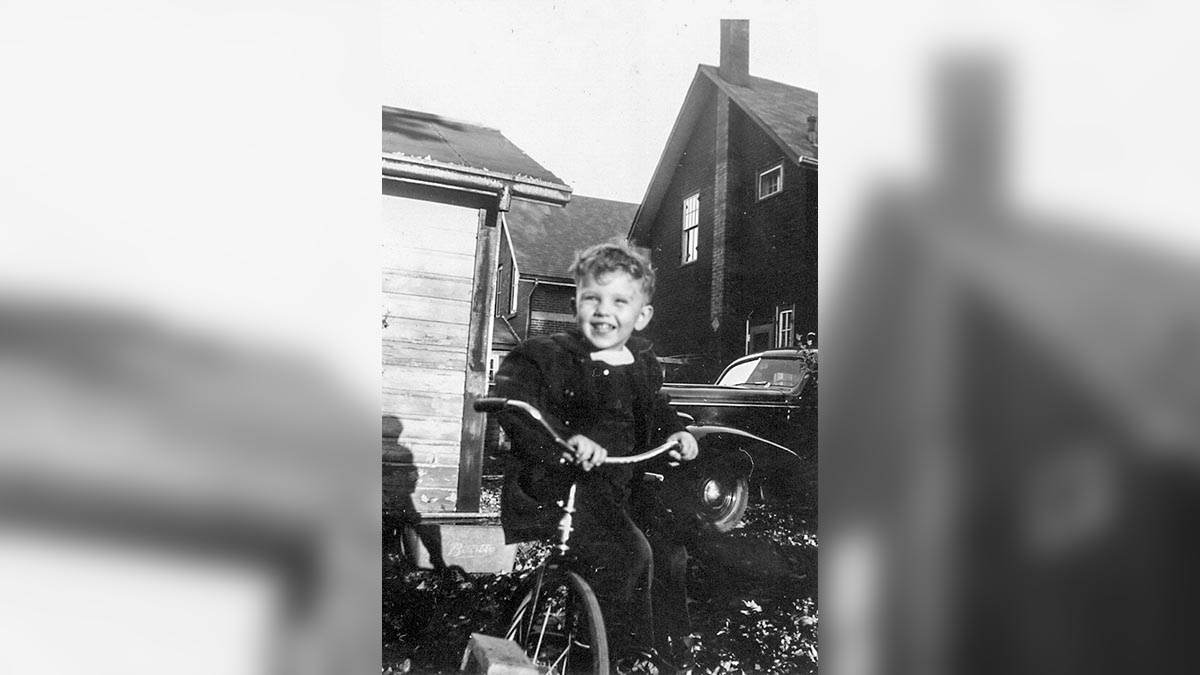
“I was born on May 14, 1947, to Thomas and Lila Simpson, in my grandfather’s home, the same house my mother, Lila was born in. They did not get to the scheduled birthing house. Older cousin Millie Bowerman helped with the birth. No girl names had been picked out because mum thought I would be a boy. Jane was finally chosen, after both my paternal and maternal grandmothers. We lived the first two years at my granddad’s home. Mom’s siblings lived there at the time. We were never lonely. When my young Uncle Burton died of complications from appendicitis in 1951. I remember that there were lots of flowers around the casket. But the realization that he was really gone never quite settled in for me.”
“In 1949, my parents purchased their farm. There was no hydro. Living with three family members was quite different than living with 13. I was two and I asked to ‘go home’ for a long time. Home for me was grandfather’s house. We all helped on the farm. As a preschooler, I used to sit on top of the grain in the seed drill. When my older sister left for school, mom, dad, and I often headed into the bush to cut pulp logs. Dad would get ready to cut a tree and ask me to hold the horses to keep them calm when the tree fell. I discovered later that he was just keeping me safe.”
“I was a bit of a brat when I was young; I was extremely inquisitive, besieging family members with constant ‘whats,’ ‘whys’ and ‘hows.’ My mother once offered to sell me for a bag of peanuts to the person that trucked cattle off the Island. I was not sure she was joking. I preferred being outdoors with my father. I had my own playhouse in his workshop. I could use my tools and toys and keep an eye on what dad was doing while he repaired the machinery and anything else that did not work.” Jane smiles as she recalls the first chainsaw. “It was brand new. He poked around a lot with it, trying to get it going but it just would not start. I observed all this and finally said to him, ‘turn on the switch.’ Dad remained calm and found that particular bit of advice worked quite well.”
“I had a pet lamb who liked to butt me down the hill in winter. It was fun until he did that to mother hanging laundry. She decided it was time to sell him. When I was older, I could drive the horses pulling the hay wagon to pick up loose hay then drive the horse pulling the hay fork to lift the hay into the mow. Driving a tractor came much later. Like many farm kids, we had to bring in wood, collect eggs, help plant and weed the vegetable garden. “In the coop, 24 hens would take turns pecking at my hands. I discovered that an empty baking powder can placed quickly over their heads avoided the whole poultry assault. We always had a dog and a cat or two, all of whom got along quite well. One day I dressed the cats up in doll clothes. They soon ran into each other behind the wood stove, assuming, we think, that each was an invader. A frenzied fight broke out. It took a while to calm them down. Mother was not impressed.”
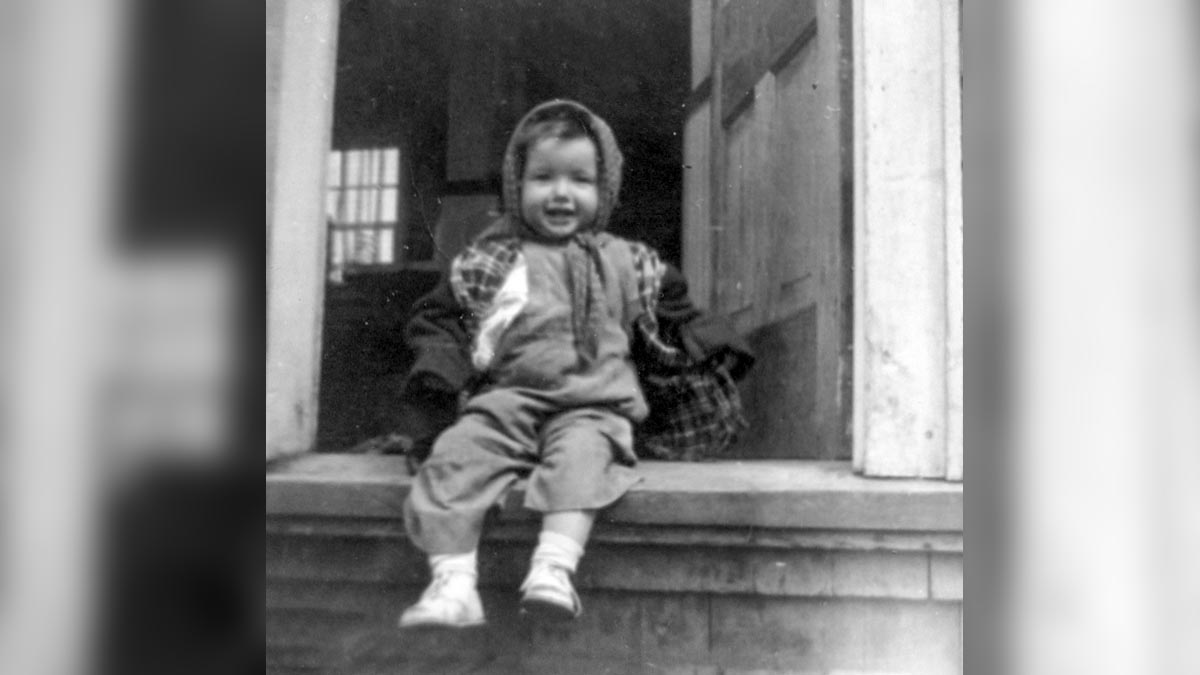
“I was the only girl in Grade 1 taught by Miss Beryl Kirk, at No. 7 Slash School. Sister Sheila was already in Grade 8. For Grades 2 and 3, I had Mr. Bill Dinsmore. He used to come out and play ball with the older students. The school was beside a farm. The boys tied bread crusts on strings and teased the chickens. Another school memory is the unique smell of the schoolhouse, an amalgamation of various lunches, wood smoke, warm bodies, and wet wool clothes, drying at the back.”
“After that year, four students were moved to the S.S. No. 4, South Baymouth School to keep it open. There were only 12 students, counting us four. The Slash School had more than 40 students when we left. Mrs. Stella Bowerman was my teacher from Grades 4 to 8. School and reading were fun. Twice a day, two senior students fetched drinking water from the harbour. Games we played were tag, baseball, Simon Says, hide and seek and red light. Yard supervision was done from inside. Mrs. Bowerman would stare at the offender while rapping her knuckles on the window. At Christmas, a few senior students got a half day off to get a Christmas tree for our annual concert.”
“High school was in Mindemoya, where the elementary school is now. It had six classrooms; much bigger than the single room we were used to. Only four of us had graduated from Grade 8 at South Baymouth in 1961. Here, we had two Grade 9 classes, totaling about 60 students. English, literature and history were my favourite subjects. I wanted to take typing but access favoured kids who were leaving school after Grade 10. I edited the Spartan yearbook, was a cheerleader and learned to curl in high school. In Grade 12, we attended an opera and enjoyed a trip to Stratford. I remember Mrs. Seabrook as one of the great teachers.”
“Art and I met the summer of 1965 at the South Baymouth Fisheries Research Station. I was a summer student working in the library and Art a summer student from the Dorset Forest Technical College. We went to baseball games and dances all over the Island. Dances were available every night of the week in various locations and luckily, Art had his own car.” He was born in Lindsay to Neil and Margaret (Storer) on February 20, 1945. He grew up in the Waterloo area where his younger sister, Johanne, still lives. She is married to Peter Messer, and they have two daughters. Art’s father Neil Deyell was in the Air Force during WWII and moved his family to many Airforce bases, including Halifax, Three Rivers, and Ottawa. After the war, his dad worked for Mutual Life in Waterloo.
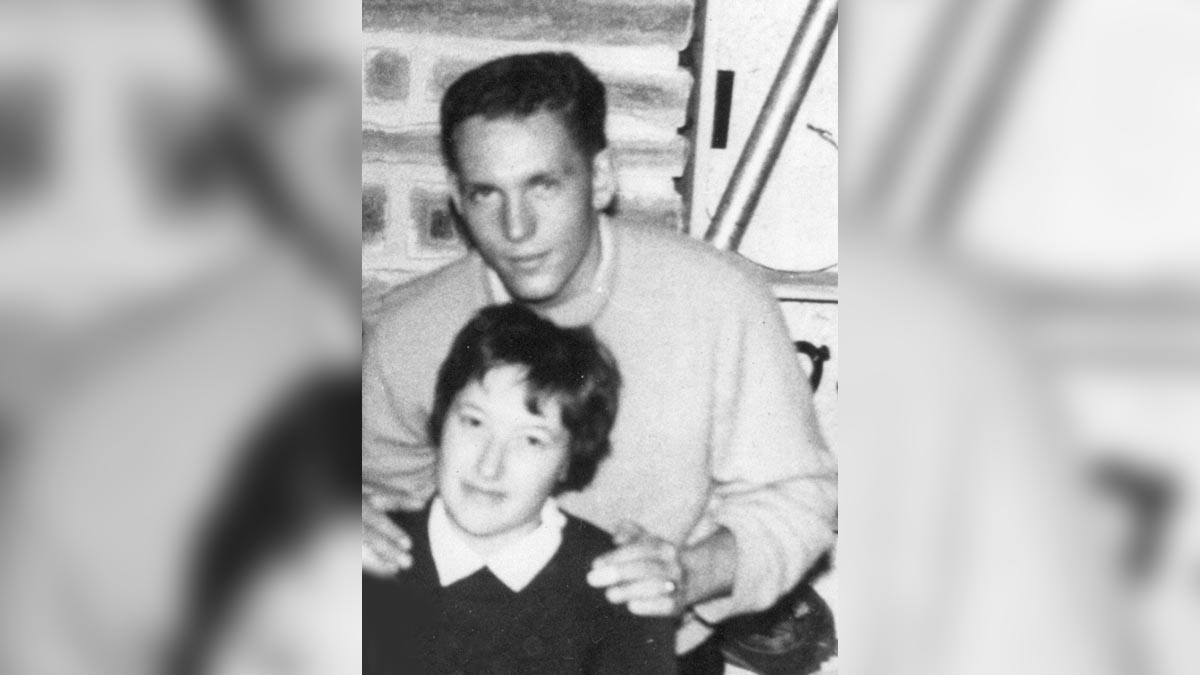
Early responsibilities for Art were picking raspberries, selling them door to door, and pulling weeds in the garden for five cents a bushel. As a student Art was active in many sports including baseball and Junior hockey for the Waterloo Siskins. Early summer jobs included being a mason’s helper, working in both a machine shop, and doing carpentry. At 17, he was part of the Junior Rangers program in Chapleau. “We earned four dollars a day and could eat as much as we wanted.”
After he graduated from the Dorset Forest Technical College, he got a full-time position at the South Baymouth Fisheries Research Station for the Ontario Department of Lands and Forests. Art continued his love of sports, playing ball and hockey in the Sault and on Manitoulin. One memorable time was the Flying Fathers hockey game which included Father Les Costello who had played for Toronto. “We both curled and cross-country skied as well. Jane added, “I sang with the Christie Singers, a city choir group in the Sault and was part of the local church choir and women’s group. I also taught Sunday school for several years.”
In 1966, Jane attended the one-year course at North Bay Teachers’ College. “My roommate was Angela (Smith) Becks, who still lives in Mindemoya. My time in North Bay was more enjoyable with her there. Early practicums consisted of one day a week observing established teachers in the classroom. This time increased to a full week and finally two weeks. Monday and Tuesday were for observing, and by Wednesday the student instructed part of the classes and by Friday, they taught all day. Student teachers were graded on their work in the college and in practice teaching. Sister Sheila had become a teacher too. She and husband Allen Hern, a Baptist minister, later moved to British Columbia and are currently living in Kamloops. They have three children.”
Art and Jane married on Saturday, November 25, 1967 in St. Andrews by the Sea United Church, in South Baymouth. This date worked with both jobs and the annual deer hunt. Jane had begun teaching in Echo Bay outside of Sault Ste. Marie, two months earlier. Art was working in the Sault doing fisheries research for the Department of Lands and Forests. “We both had to be back at work on Monday morning.”
In January 1970, the couple bought their first house in nearby Bar River. “We had a nice bungalow on an acre of land and could plant a garden in rock-less soil. We got our first dog, Turk, a big black lab. Since we were the first of our friends to buy a house, it became a gathering place on weekends.” In 1971 Art transferred back to the research station in South Baymouth. The couple sold their house and moved to the Island. “We stayed with mom and dad initially, then moved into a dedicated apartment for staff at the research station.” Art adds, “Eventually I ran the research boat, setting experimental nets and planting fish in the North Channel, Georgian Bay and Lake Huron.”
“We bought these five acres we are now on from my parents and built a package house. Art and I, as helper, learned a lot about drywall, flooring and trim work. Grandad’s carpentry skills were revived when he saw our pre-assembled house that came in a truck. He was fascinated. His lawn chair was permanently perched at the construction site, often with him in it, watching the progress. We moved in before it was finished.”
After returning to Manitoulin, Jane spent five years as a permanent part-time teacher at the Tehkummah School. In 1977, she taught at the Assiginack School and continued to take the practical Ministry of Education courses. Later, she enrolled at Laurentian University and over 10 years, got her Bachelor of Arts, all while sitting at her kitchen table. “It had been 20 years since I left teacher’s college and it was challenging to get back into the learning mode and deal with all the writing assignments. Leslie Fields, a fellow teacher, was also doing her degree by correspondence, so I had a supportive partner to discuss issues with.” Jane finished her degree in 1996 and retired from teaching in 2000.
Art trained as a volunteer firefighter at the inception of the program in 1976 along with Doug McMurray and Jerry McGillis. “The three of us took the necessary courses and began the program in Tehkummah.” Art also built a hunt camp off the eighth line, the original road to Michael’s Bay, near Poole Lake. He hunted deer there and moose off Island, cutting up the meat himself. “Art cut the logs he used to construct the camp, our garage, decks, cupboards and furniture. We have had many successful hunts and good times at the camp,” Jane adds. “I found it a great place to study, with no road noise, no television, and no interruptions.”
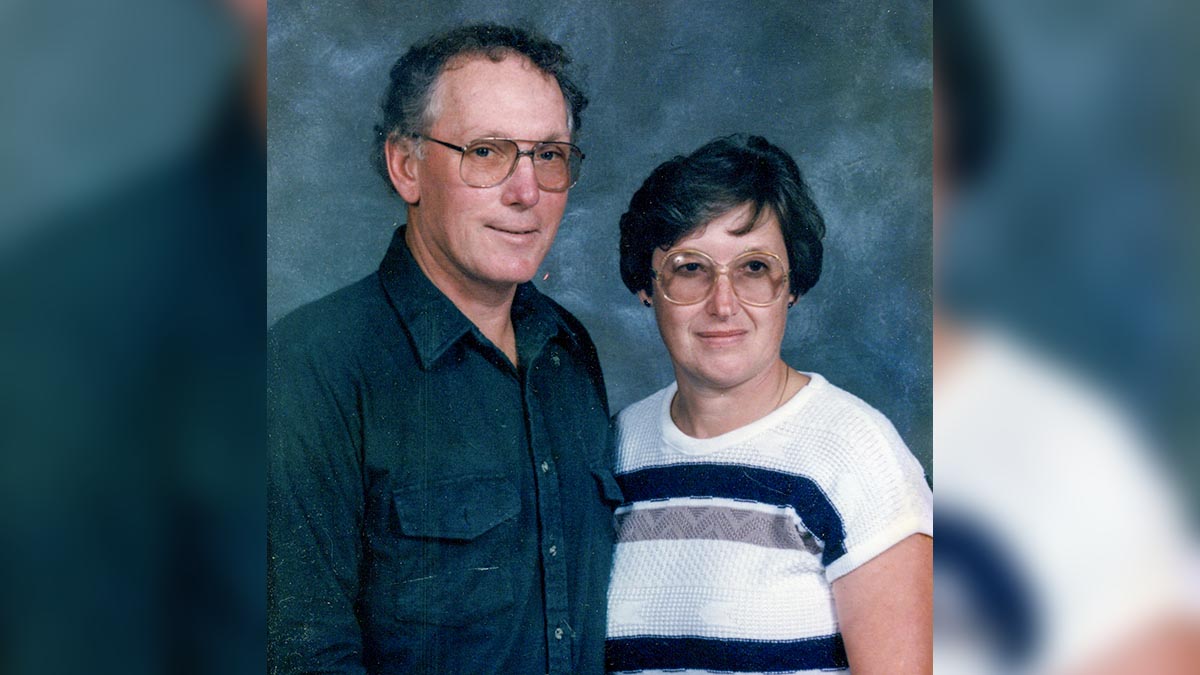
“Fondest memories? Time spent together as a family. All special holiday events like Easter or Christmas, have revolved around family. Most important event in my life? Meeting Art. If Art hadn’t come here to stay at the research station, my inquisitiveness might have sent me out there to discover more of our world. Travels? We have been to both coasts. Art does not like the sunny southern locations, but I continue to travel with several ladies, most winters and we have been to Cuba, Mexico and the Dominican Republic. We travelled the Island, fishing in Manitoulin lakes, tenting in campgrounds here and across Ontario. We could have travelled more, but we don’t have any regrets.”
“Association I participated in? I was the Manitoulin District Chair of the Federation of Women Teachers of Ontario. Once I had to travel to Toronto for the annual teachers’ meeting. While I was away, Art answered the phone. He was cooking supper, cleaning dishes, and forgot the tap was running. I had joked over the years about getting a dishwasher and the following year, we got one. Pets? We had three Labrador retrievers, Turk, Cricket and Tip.”
Favourite season? “Fall,” Art says quickly. “I like the weather and it’s almost hunting season. Jane adds “since our retirement, fall is often a time for getaways. Spring is special too; the snow is gone, and the garden begins to grow.”
Favourite television shows? “Hockey, baseball, football, detective shows and interactive shows like Jeopardy.”
If you could go back in time, would you change anything? “I would not have changed a whole lot,” Art says. Jane adds, “I have begun to understand and enjoy football and I like watching the Blue Jays.” Strengths? Organization and involvement are at the top of Jane’s list. She was on the salary negotiation team for the elementary teachers of Manitoulin for several years. She mentored student teachers in the classroom as part of their training. She still volunteers at the Little Schoolhouse and Museum in South Baymouth and chaired that board for 10 years. For Art, planning and problem solving are areas of confidence.
Something you still want to know more about? “We are always curious. After retirement we learned to use the computer. We are both very satisfied with our lives. I like what we are doing here. We can see our family, enjoy our spacious yard, work on crafts: carpentry, painting, reading and sewing. I have started researching the genealogy of our families. I am hoping to convince cousins to write about their Bowerman parents so we can combine all our information.”
“Recipe for happiness? Patience for each other’s differences. Art puts up with my silly ideas; he is not always patient, but love can smooth out these idiosyncrasies.
Most proud of? For Jane, “Teaching and influencing young minds. I enjoy touching base with classmates, colleagues, and former students on Facebook. I am so proud of the students who were part of my life. For Art, it is building this house and the camp. Most afraid of? Losing our independence.”
“People who inspired me? For Art, it was Ivan Sisson. He was a mentor in maintaining and running tugs, as well as developing fishing and navigation skills. I eventually took over his job when he retired.” For Jane, “So many different people, neighbours and friends who provided support. The Serenity Prayer by Reinhold Niebuhr, as I remember it, has kept me grounded over the years: ‘God grant me the serenity to accept the things I cannot change; courage to change the things I can; and wisdom to know the difference.’”

“We have always liked the laid-back lifestyle of Manitoulin. We do not miss busy city streets. We have many access points to the lakes; we love all the space, and you don’t feel pressured here. We know all the visitors keep Manitoulin viable, but we also breathe a sigh of relief when the Chi Cheemaun leaves in October. Nevertheless, the friendliness is of a special brand here. I recall hearing a comment at a teachers’ meeting in Toronto. ‘We can tell you are from the North because you smile and make eye contact. Manitoulin has changed over the years, but it is still an extraordinary place for all of us.”

